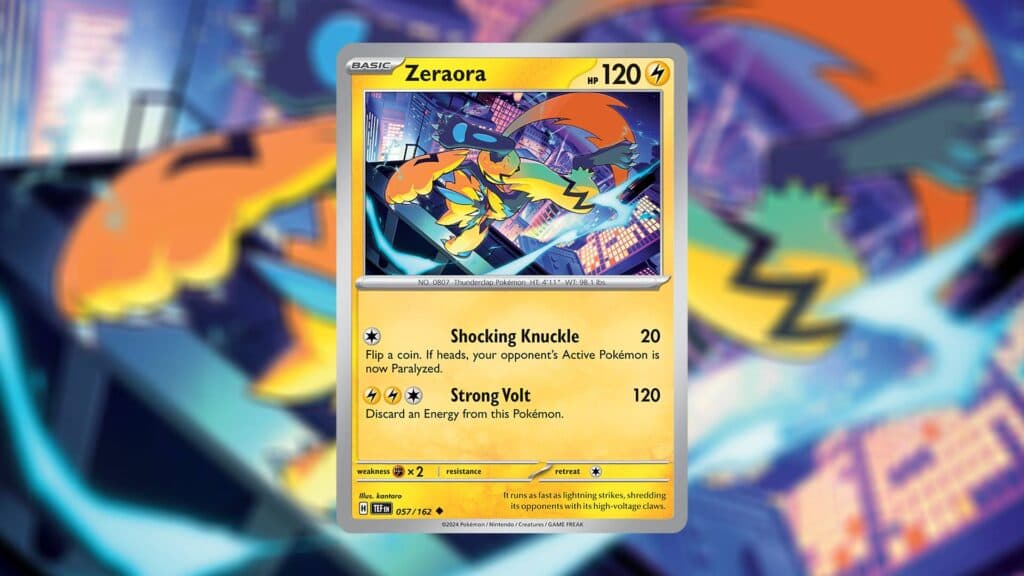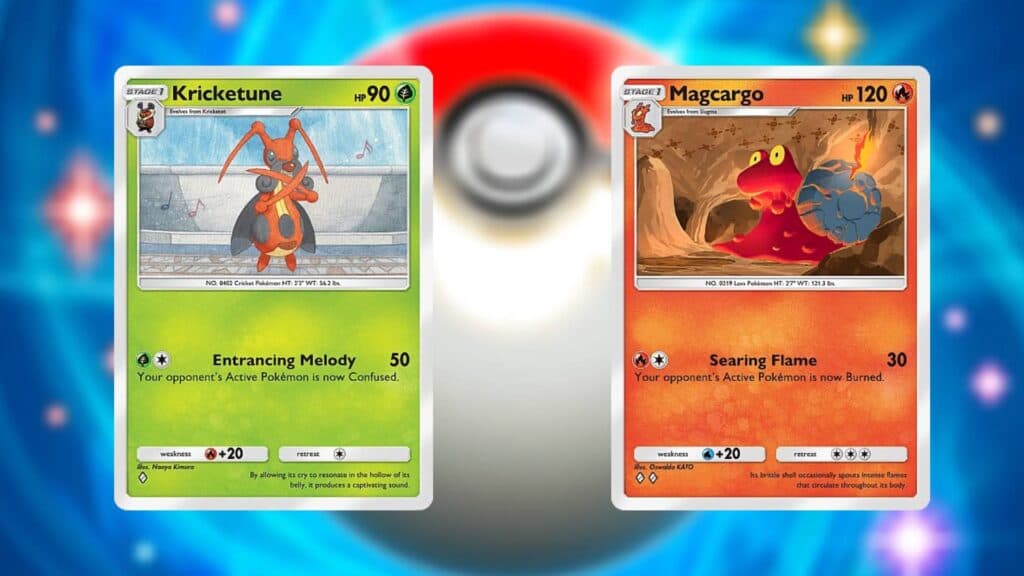From hindering a Pokemon from attacking to dealing damage each turn, all Pokemon TCG Special Conditions can turn the tide of every battle.
Whether you want to anticipate your opponent’s next move or wear them down despite a type disadvantage, understanding all Pokémon TCG special conditions is an essential part of every player’s skill set, both seasoned and newbies alike.
Just like the mainline games, the special condition mechanic is also one of the most prominent features in the rules of Pokémon TCG.
Since the card game’s first set in 1996, various Pokémon cards can have moves or abilities that inflict Special Conditions on the opposing Pokémon team. These Special Conditions can hinder an Active or Benched Pokémon from functioning properly, even if they can deal more damage or have higher HPs.
For this guide, you’ll learn everything about Special Conditions in Pokémon TCG, such as their effects and how to make a Pokemon recover from one during a game.
What are Special Conditions according to official Pokémon TCG rules?

Special Conditions are statuses that harm a Pokémon apart from receiving damage from a move. Many Pokémon cards can induce Special Conditions to their foes by using moves or abilities.
Currently, there are five types of Special Conditions in Pokémon TCG, and these are:
- Paralyzed: Stops a Pokémon from attacking and retreating.
- Poisoned: Puts a damage counter (10 damage) on an affected Pokémon at the end of every turn.
- Burned: Puts two damage counters (20 damage) on an affected Pokémon at the end of every turn.
- Asleep: Prevents a Pokémon from attacking or retreating.
- Confused: Once an affected Pokémon attacks, flip a coin. If heads, the attack shall be dealt to the opposing Pokémon normally. If tails, the attack does nothing and put three damage counters (30 damage) on the Confused Pokémon.
Keep in mind that Pokémon with special conditions can still use their abilities, as the term “attacking” specifically refers to the act of using a move.
Applying Special Conditions and how to recover
Now that you know the basic effects of all Special Conditions in Pokémon TCG, here are the details of how they are applied in a physical game:
Special Conditions | How to Mark an Affected Pokémon | Ways of Recovery |
|---|---|---|
| Paralyzed | Turn the Pokémon card sideways in a clockwise direction. | Automatically recovers at the end of the next turn. Specific effects of other cards. Evolving the affected Pokémon. Moving to the bench. (Through the help of card effects) |
| Poisoned | Add a Poison marker on the affected Pokémon. | Specific effects of other cards. Moving to the bench. Evolving the affected Pokémon. |
| Burned | Add a Burn marker on the affected Pokémon. | After dealing the two damage counters, flip a coin. If heads, the Pokémon recovers from the Burned condition. If tails, the Pokémon remains Burned for the next turn. Specific effects of other cards. Moving to the bench. Evolving the affected Pokémon. |
| Asleep | Turn the Pokémon card sideways in a counterclockwise direction. | At the end of your turn, flip a coin. If heads, the Pokémon fully recovers from the Asleep condition. If tails, the Pokémon remains asleep for your next turn. Specific effects of other cards. Moving to the bench (Through the help of card effects). |
| Confused | Rotate the Pokémon card 180 degrees, such that its text is readable to your opponent. | Specific effects of other cards. Moving to the bench. Evolving the affected Pokémon. |
Do Special Conditions Stack?
Special Conditions of the same type don’t stack. For example, as long as a Pokémon is Poisoned, it cannot be Poisoned by another move or ability again.
Paralyzed, Asleep, and Confused conditions also don’t stack since they change the position of a Pokémon card. If a Confused Pokémon gets hit by a move or ability that inflicts the Paralyzed condition, the Pokémon’s condition simply shifts from Confused to Paralyzed.
Poisoned and Burned can stack with other Special Conditions, so in a worst-case scenario, it’s possible for a Pokémon to get Poisoned, Burned, and Paralyzed at the same time.
How do Special Conditions work in Pokémon TCG Pocket?

Pokémon TCG Pocket mostly follows the same Special Condition rules as the physical Pokémon TCG and its digital counterpart, Pokémon TCG Live.
The only difference is that a Confused Pokémon cannot hurt itself if its player gets the tail after the coin toss. Instead, the attack does nothing and ends the player’s turn.
With the release of Space-Time Smackdown, all Pokemon TCG Special Conditions can now be used in the game, with cards like Kricketune inflicting the Confused condition with its Entrancing Melody and Magcargo that can Burn an opposing Pokémon using its Searing Flame.
Master the basics of Pokémon TCG and build the best deck by checking more guides here at esports.gg!